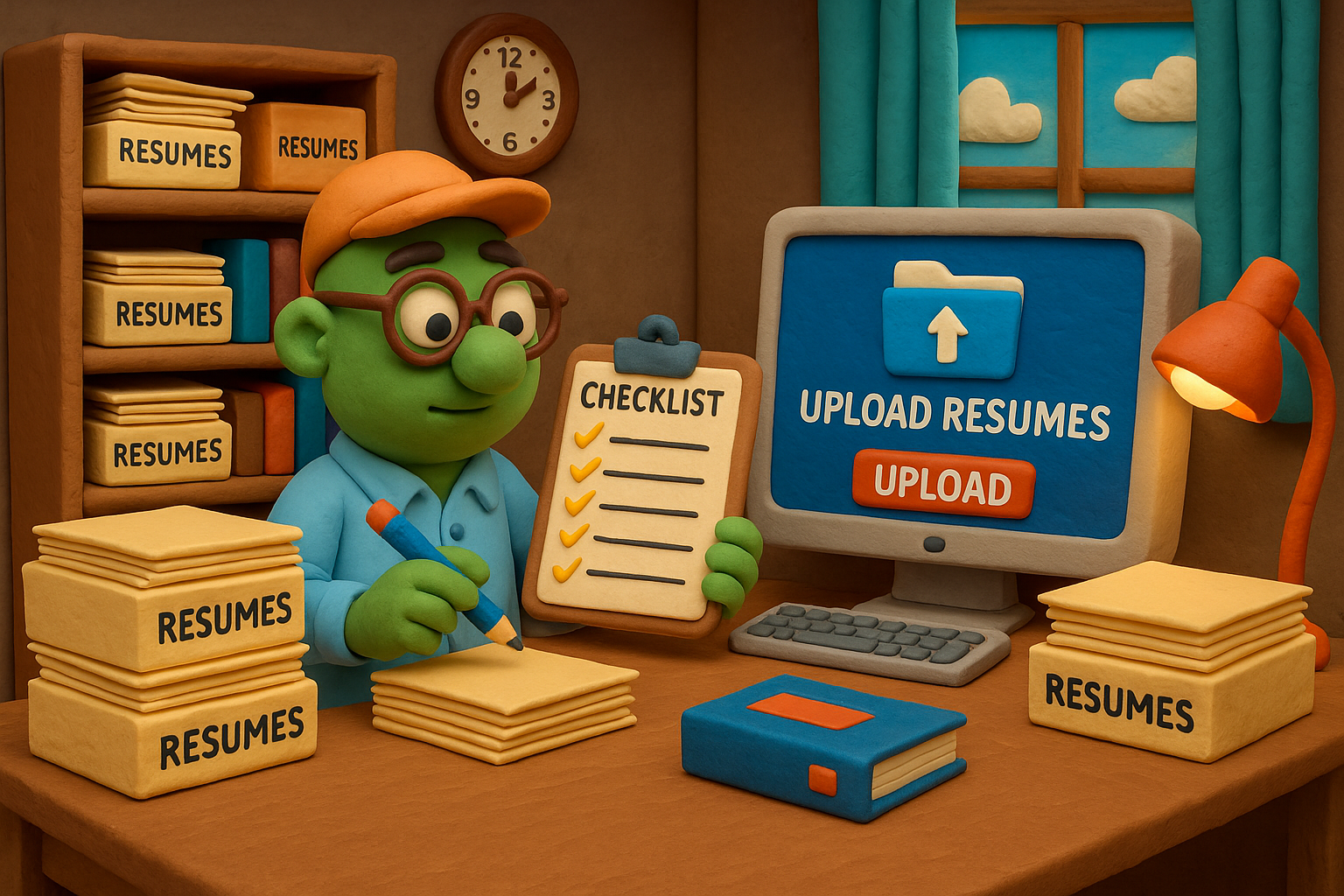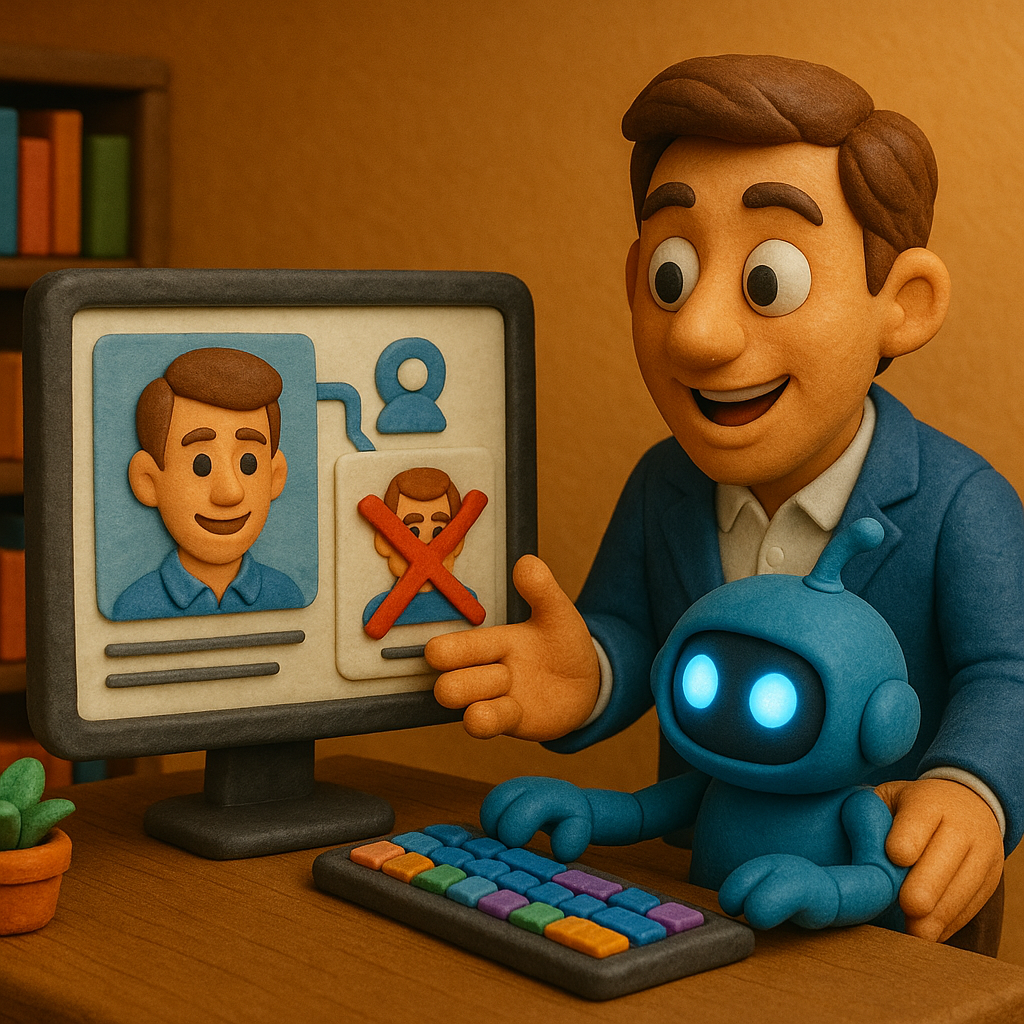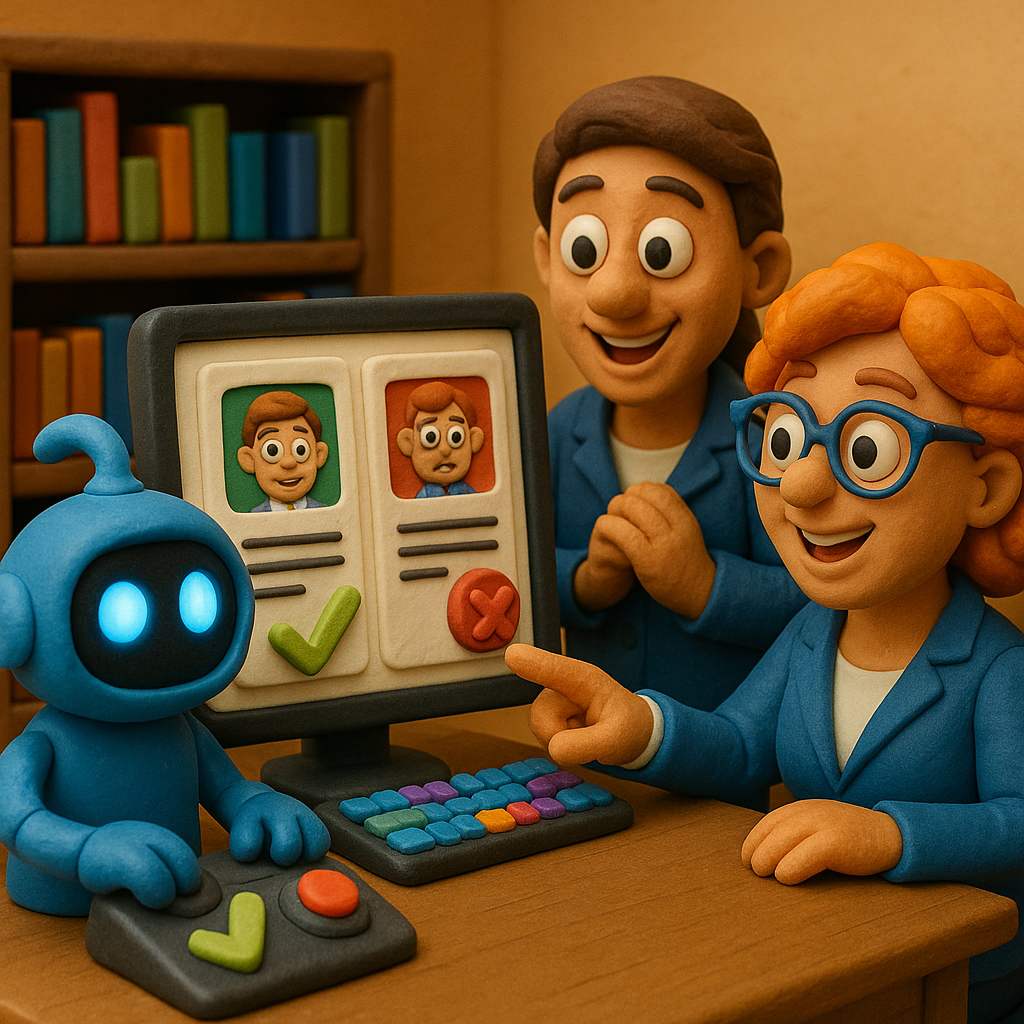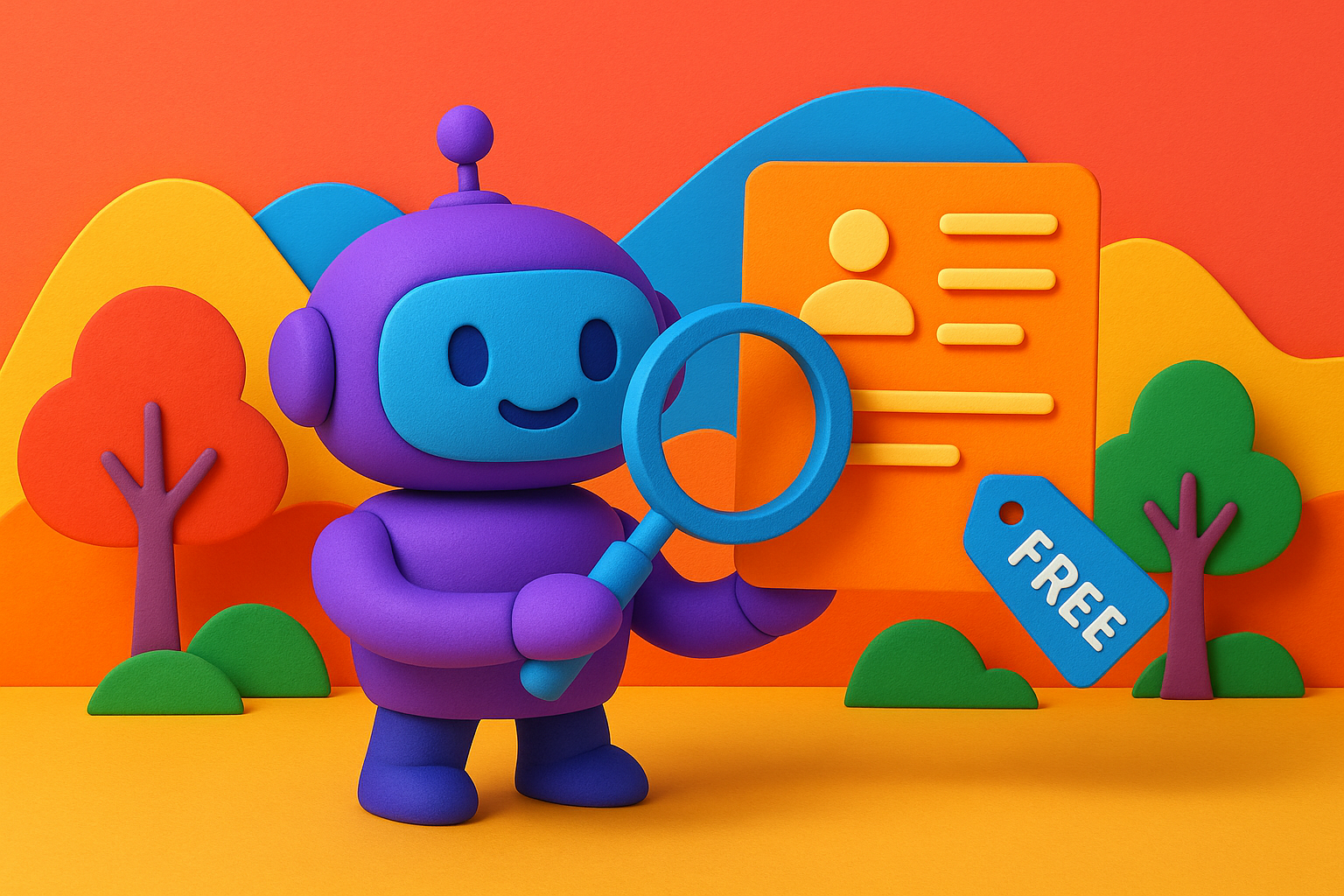
How to Automate Resume Screening with Zapier Integration
How to Automate Resume Screening with Zapier Integration
Published on November 8, 2025 · Q&A format · Step-by-step guide to building automated resume screening workflows with AI recruitment software and Zapier.

Q: Why should I use Zapier for resume screening instead of doing it manually?
Because your time is better spent talking to qualified candidates, not opening 200 PDFs and copy-pasting to spreadsheets.
Here's the brutal math: Manual screening takes 5-8 minutes per resume. For 100 weekly applicants, that's 8-13 hours of grunt work. With Zapier + AI recruitment software, the same workload runs in under 10 minutes—and you don't lift a finger.
Zapier acts as the glue between your tools: email → AI screening → ATS → Slack notifications → calendar booking. One workflow handles what used to require 5 manual steps across 4 different apps. Set it up once, runs forever.
Plus, in 2025, candidates expect fast responses. Manual screening means 2-3 day delays. Automation means candidates get scored and contacted within minutes of applying. That speed alone increases your acceptance rate by 15-20%.
Q: What exactly is Zapier and how does it work with AI recruitment software?
Zapier is a no-code automation platform that connects 7000+ apps. Think of it as IFTTT (If This Then That) for business tools.
For resume screening, you build "Zaps" (workflows) like:
- Trigger: New email with resume attachment hits jobs@company.com
- Action 1: Extract resume file
- Action 2: Send to AI recruitment software API for screening
- Action 3: Parse response (candidate score, skills, experience)
- Action 4: If score ≥75, add to ATS; if 50-74, flag for review; if <50, send rejection email
- Action 5: Post to Slack: "New candidate: Sarah Chen - Score: 85 - Python, React, 5 years exp"
The AI recruitment software does the heavy lifting (parsing resume, scoring against job requirements). Zapier just routes the data to the right places based on your rules.
Cost: Zapier starts at $20/month (Starter plan, 750 tasks). Each resume processed = ~5-7 tasks, so 100-130 resumes/month. Scales from there.
Q: Which AI recruitment software works best with Zapier?
Most modern AI screening tools have Zapier integrations or support webhooks (which Zapier can call). Top options in 2025:
- Native Zapier integrations: HireVue, Pymetrics, HireScore, Modern Hire—these have pre-built Zapier apps (easy setup, just authorize and go)
- API-based (webhooks): Most AI resume screening tools provide REST APIs. You use Zapier's "Webhooks by Zapier" action to POST resume data and receive JSON scores back. Slightly more setup but way more flexible.
- Hybrid platforms: Tools like Workable, Greenhouse, Lever have built-in AI screening + Zapier integrations—best of both worlds if you're already using them as your ATS
Key features to look for: Resume parsing (extract text from PDF/DOCX), skill matching (compare candidate skills to job requirements), experience scoring (years of relevant work), education verification, and custom scoring models you can tune.
Modern AI recruitment software uses NLP (Natural Language Processing) trained on millions of resumes, so it handles weird formats, typos, and non-standard job titles surprisingly well.
Q: Can you walk me through building a basic automated screening workflow step-by-step?
Absolutely. Here's a real-world example: "Email Resume → AI Screen → Google Sheets → Slack Notification"
Step 1: Create a new Zap
- Log into Zapier, click "Create Zap"
- Name it: "Resume Auto-Screening Pipeline"
Step 2: Set up the trigger
- App: Gmail
- Trigger: "New Email Matching Search"
- Search:
to:jobs@yourcompany.com has:attachment - This catches any email with a resume attachment to your jobs inbox
Step 3: Extract the resume attachment
- App: Gmail
- Action: "Download Attachment"
- Filter: Only PDFs or DOCX files
- Output: Resume file ready for AI analysis
Step 4: Send to AI recruitment software
- App: Webhooks by Zapier
- Action: POST
- URL: Your AI screening API endpoint (e.g.,
https://api.yourscreeningtool.com/v1/analyze) - Headers:
Authorization: Bearer YOUR_API_KEY - Body: Multipart form with resume file + job requirements JSON
- Response:
{"score": 82, "skills": ["Python", "AWS", "React"], "experience_years": 6, "match_level": "strong"}
Step 5: Add conditional logic
- App: Filter by Zapier
- Condition: Only continue if
score >= 70 - This prevents low-scoring candidates from cluttering your pipeline
Step 6: Add to Google Sheets (or ATS)
- App: Google Sheets
- Action: "Create Spreadsheet Row"
- Map fields: Name → from email subject, Email → from email sender, Score → from API response, Skills → from API response, Applied Date → today's date
Step 7: Send Slack notification
- App: Slack
- Action: "Send Channel Message"
- Channel: #hiring
- Message: "🎯 New qualified candidate: [Name] - Score: [Score]/100 - Skills: [Skills] - Review: [Sheet_URL]"
Step 8: Test and activate
- Send yourself a test email with a resume
- Watch the Zap run through each step (Zapier shows live execution logs)
- Verify data lands correctly in Sheets and Slack
- Turn on the Zap—now it runs automatically 24/7
Total setup time: 25-40 minutes first time, then you're done. Every future resume processes automatically in seconds.
Q: How do I handle candidates who apply via different channels (LinkedIn, Indeed, direct website)?
Build separate Zaps for each source, or use a multi-trigger Zap:
Option 1: Multiple trigger Zaps (simpler)
- Zap 1: Gmail trigger (email applications)
- Zap 2: Typeform/Fillout trigger (website form submissions)
- Zap 3: LinkedIn via webhook (if your LinkedIn Jobs account supports it)
- All three feed into the same AI screening + routing workflow
Option 2: Zapier's multi-app trigger (advanced)
- Use "App Event" trigger that watches multiple sources
- Normalize data (LinkedIn calls it "applicant", Indeed calls it "candidate")
- Single workflow handles all sources
Option 3: Centralize via ATS
- Most ATSs (Greenhouse, Lever) aggregate applications from all sources
- Build one Zap: ATS webhook → AI screening → write results back to ATS
- Cleanest approach if you already have an ATS
Pro tip: Add a "source" tag to each candidate so you can track which channels produce best hires (e.g., "source": "linkedin" vs "source": "email").
Q: Can I customize the AI screening criteria for different job roles?
Yes! This is where AI recruitment software shines. Most tools let you pass job-specific parameters:
Example API request customization:
- Job title: "Senior Backend Engineer"
- Required skills: ["Python", "PostgreSQL", "Redis", "Docker"]
- Nice-to-have skills: ["Kubernetes", "Go", "GraphQL"]
- Minimum experience: 5 years
- Minimum education: Bachelor's degree
- Location: "Remote" or "San Francisco Bay Area"
In Zapier, implement this with Paths:
- Path A: If email subject contains "Senior Engineer" → use strict criteria (5+ years, specific tech stack)
- Path B: If email subject contains "Junior Engineer" → use lenient criteria (1+ years, willingness to learn)
- Path C: If email subject contains "Designer" → different criteria entirely (portfolio, design tools, not coding skills)
Each path calls the AI screening API with different parameters, then routes to role-specific ATS folders or Airtable views.
You can even A/B test scoring models: route 50% through strict criteria, 50% through lenient, then track which produces better hires over 3 months.
Q: What happens to candidates who score below the threshold—do they get auto-rejected?
That's up to you, but here's the smart approach:
Three-tier routing:
- Score 75-100 (Strong match): Auto-add to ATS, send "We're interested!" email, schedule phone screen
- Score 50-74 (Maybe): Add to "Review Needed" folder, Slack notify recruiter: "Edge case—worth a manual look?"
- Score 0-49 (Weak match): Send polite rejection email, store in "Rejected" folder for future reference
Key: Always allow human override. Even the best AI makes mistakes. A "Review Needed" tier catches edge cases like career pivoters, bootcamp grads, or unconventional backgrounds that still might be great hires.
Legal note: Some jurisdictions (NYC, EU) require disclosing AI usage in hiring. Include in your application form: "We use AI-assisted resume screening. You may request human review by emailing talent@company.com." Build that email trigger into a Zap too.
Q: How do I sync the screening results back to my ATS (Greenhouse, Lever, Workday)?
Most modern ATSs have Zapier integrations. Here's how:
Example with Greenhouse:
- Step 1: After AI screening completes, use "Greenhouse - Create Candidate" action
- Step 2: Map fields: Name, Email, Phone from email/resume
- Step 3: Use "Greenhouse - Add Application" to link candidate to specific job
- Step 4: Use "Greenhouse - Add Note" to attach AI score breakdown: "AI Score: 85/100 - Skills matched: Python, React, PostgreSQL - Experience: 6 years - Education: B.S. Computer Science"
- Step 5: Use "Greenhouse - Advance to Stage" to move high scorers from "Applied" to "Phone Screen" automatically
For ATSs without native Zapier integration:
- Use "Webhooks by Zapier" to call the ATS's API directly
- Or use email-to-ATS: most ATSs accept candidates via email (send formatted email with resume + score)
- Or write to Google Sheets/Airtable and have recruiters import manually (least ideal but works)
The goal: recruiters see AI scores and notes inside their existing workflow, not in a separate tool they have to check.
Q: Can I automatically schedule interviews with top-scoring candidates?
Yes! This is next-level automation. Here's the flow:
Automated interview scheduling workflow:
- Step 1: Candidate scores ≥85 (your threshold)
- Step 2: Zapier → Calendly action: "Create Invitee"
- Step 3: Generate unique Calendly booking link
- Step 4: Gmail → Send templated email: "Hi [Name], Congrats! We'd love to chat. Book your 30-min phone screen here: [Calendly_Link]. Looking forward to it! - [Recruiter_Name]"
- Step 5: Wait for Calendly webhook (candidate books)
- Step 6: Update ATS stage to "Interview Scheduled"
- Step 7: Slack notify hiring manager: "Interview scheduled with [Name] on [Date/Time]"
From candidate application to interview booked: under 5 minutes, zero human input.
Alternative tools: Cal.com, Microsoft Bookings, or Google Calendar appointment slots—all have Zapier integrations.
Pro move: Use conditional logic to route different roles to different interviewers. Engineers → CTO calendar, designers → Design Lead calendar, sales → Sales VP calendar.
Q: How do I prevent duplicate candidates from getting processed multiple times?
Deduplication is critical. If Sarah applies twice (via email and LinkedIn), you don't want two screening runs.
Solution 1: Zapier's built-in deduplication
- Add "Filter by Zapier" step
- Check if email already exists in your Google Sheet/ATS
- Use "Lookup Spreadsheet Row" to search for email
- If found → skip processing, update existing record instead
- If not found → proceed with full screening
Solution 2: Use email as unique key in your database
- In Airtable/Google Sheets, make email column unique
- When Zapier tries to create duplicate, it fails gracefully or updates existing row
Solution 3: Hash-based deduplication (advanced)
- Generate hash from email + full name
- Store hashes in a Redis/Firebase cache (TTL = 90 days)
- Check hash before processing
- Overkill for most, but bulletproof for high-volume hiring
Q: What's the best way to track and measure ROI of automated screening?
Build a simple analytics dashboard. Key metrics to track:
Efficiency metrics:
- Time saved: (Avg manual screening time × applications/month) - Zapier task costs
- Resumes processed: Count of successfully screened candidates
- Screening speed: Average time from application to scored (should be <1 minute)
- Cost per resume: Zapier + AI API costs ÷ resumes processed (target: <$0.50)
Quality metrics:
- Interview conversion rate: % of auto-screened candidates who pass phone screen
- Hire conversion rate: % of auto-screened candidates who get hired
- False negative rate: Manually review 10 random "rejected" resumes monthly—any missed gems?
- Recruiter satisfaction: Survey your team—do they trust the AI scores?
Track in a Google Sheet:
- Column A: Week of
- Column B: Resumes received
- Column C: Resumes screened by AI
- Column D: High scorers (75+)
- Column E: Interviews scheduled
- Column F: Hires made
- Column G: Time saved (hours)
After 3 months, you'll have data to justify expanding automation or tuning scoring thresholds.
Q: What are common mistakes people make when setting up Zapier screening workflows?
Top five, based on real implementation experience:
1. Not testing with real resumes first
- Mistake: Build workflow, turn it on, pray it works
- Fix: Test with 10-20 actual resumes before going live. Check every output field
2. Ignoring error handling
- Mistake: Assume APIs never fail, internet is always up
- Fix: Add error notifications. If AI API returns 500, send Slack alert to ops team
3. Over-automating too fast
- Mistake: Auto-reject, auto-schedule, auto-send offers on day one
- Fix: Start semi-automated (AI scores → human reviews → manual actions). Gradually remove humans from the loop as you gain confidence
4. Not normalizing data between systems
- Mistake: LinkedIn sends "first_name"/"last_name", email sends "full_name"—your sheet has both formats
- Fix: Add a "Formatter by Zapier" step to standardize all inputs to your schema
5. Forgetting about mobile-optimized emails
- Mistake: Auto-emails look great on desktop, broken on mobile (where 60% of candidates read them)
- Fix: Use simple, plain-text email templates. Test on iPhone before going live
Q: Can I use Zapier to screen candidates in bulk (like 100 resumes from a job fair)?
Yes, but you need a slightly different approach than the "one-at-a-time" email trigger.
Bulk screening workflow:
- Step 1: Upload all resumes to a Google Drive folder (e.g.,
/Resumes/Job_Fair_Nov_2025) - Step 2: Zapier trigger: "New File in Google Drive Folder"
- Step 3: For each file, run the standard AI screening workflow
- Step 4: All results land in the same Google Sheet with "source": "job_fair_nov"
Cost consideration: 100 resumes × 6 tasks each = 600 Zapier tasks (need Professional plan at $50/month for 2000 tasks). Worth it if you do bulk hiring regularly.
Faster/cheaper alternative for high volume:
- Use the AI recruitment software's bulk upload feature directly (most support batch API calls)
- Export results as CSV
- Use Zapier just for the "top scorers" routing (screen 100 → identify 20 strong matches → those 20 trigger Zapier workflows)
Q: How do I make sure I'm GDPR/privacy compliant when using Zapier with candidate data?
Privacy is non-negotiable in 2025. Here's your compliance checklist:
1. Data Processing Agreements (DPAs)
- Zapier has a GDPR-compliant DPA—sign it (Settings → Legal)
- Your AI recruitment software should also have a DPA—get it signed
- Document where data flows: Email → Zapier → AI tool → ATS → Slack
2. Consent tracking
- Add to application form: "I consent to automated processing of my application data for recruitment purposes"
- Store consent in a hidden field that flows through the workflow
3. Data retention
- Build a cleanup Zap: "Every 90 days → Find candidates older than X months → Delete from Sheets/Airtable"
- Or use Airtable's automated archiving
4. Right to deletion
- When candidates email "delete my data," trigger a Zap that purges from all systems
- Lookup by email → Delete from ATS, Sheets, AI tool database
5. Encryption
- Zapier transfers are HTTPS by default (good)
- Avoid storing SSN, birth dates, or sensitive fields in workflows
- If you must, use encryption fields in Airtable or database-level encryption
Q: What's next for AI recruitment automation—where is this heading?
Exciting trends emerging in 2025 and beyond:
- AI agents that run full hiring cycles: Imagine saying "Hire a senior React developer" and an agent handles everything—posts job, screens 500 applicants, schedules top 10, conducts initial video screens, presents finalists to you
- Multimodal screening: AI analyzes resume + LinkedIn + GitHub + personal website + video intro simultaneously, gives holistic score
- Predictive "likely to accept" scores: AI predicts which candidates will accept offers based on salary range, location, company stage, career trajectory
- Real-time labor market matching: AI compares your requirements to current market availability and says "You're asking for 5+ years React at $80K—99% of candidates want $120K+. Suggest adjusting?"
- Automated reference checks: AI sends customized reference questionnaires, parses responses, flags red flags
Within 2-3 years, recruiters will spend zero time on resume screening. 100% of their time will be on relationship-building, selling candidates on the role, and strategic hiring planning. The grunt work becomes fully automated.
Ready to automate your screening? Our AI recruitment software integrates seamlessly with Zapier—just authorize and start building workflows in minutes. No coding required, free trial available.
Related reading
- How to Build Custom Resume Screening Workflows with No-Code Tools
- Why RESTful API Resume Screening Beats Manual Processing
- Best Practices for Resume Data Export and CSV Management
Join the conversation
Ready to experience the power of AI-driven recruitment? Try our free AI resume screening software and see how it can transform your hiring process.
Join thousands of recruiters using the best AI hiring tool to screen candidates 10x faster with 100% accuracy.
Related Articles
How to Build Custom Resume Screening Workflows with No-Code Tools
No developers? No problem. This Q&A walks through building production-ready resume screening workflows using Zapier, Mak...
Why RESTful API Resume Screening Beats Manual Processing
Still manually reviewing hundreds of resumes? This Q&A breaks down why RESTful APIs are crushing manual screening in 202...
What Conversational AI Resume Screening Looks Like in Practice
Conversational AI resume screening transforms candidate experience with 24/7 chatbot interactions, instant feedback, and...
How Startups Screen Resumes on Zero Budget: Complete Guide
Pre-revenue startup with no hiring budget? This Q&A shows you how to screen 200+ resumes/year using 100% free tools—AI r...
Why Skills-Based Resume Screening Outperforms Degree-Based Filtering
Still filtering resumes by college degrees? This Q&A breaks down why skills-based screening finds better candidates, red...
Best Free vs. Premium Resume Screening: Complete 2025 Comparison
Evaluating resume screening tools? This comprehensive Q&A compares free and premium AI recruitment software across 12 ke...
From the forum
Popular Posts
Free AI Resume Screening Software That Actually Works
Best Free AI Resume Screening Software 2025
How AI-Powered Resume Screening Reduces Hiring Time by 90% While Maintaining Quality Candidates
How Free Resume Screening Software is Revolutionizing Small Business Hiring in 2025
Why Manual Resume Screening is Becoming Obsolete in 2025: The Complete Shift to Intelligent Hiring
Recent Posts

How Video Resume Screening with AI Changes Hiring in 2025
November 12, 2025

What Conversational AI Resume Screening Looks Like in Practice
November 12, 2025

How Startups Screen Resumes on Zero Budget: Complete Guide
November 11, 2025
Why Skills-Based Resume Screening Outperforms Degree-Based Filtering
November 11, 2025

Best Free vs. Premium Resume Screening: Complete 2025 Comparison
November 10, 2025